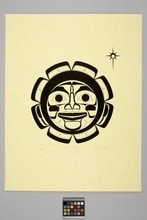Item number Nb7.228 from the MOA: University of British Columbia.
 Public
Public
Item Records
This page shows all the information we have about this item. Both the institution that physically holds this item, and RRN members have contributed the knowledge on this page. You’re looking at the item record provided by the holding institution. If you scroll further down the page, you’ll see the information from RRN members, and can share your own knowledge too.
The RRN processes the information it receives from each institution to make it more readable and easier to search. If you’re doing in-depth research on this item, be sure to take a look at the Data Source tab to see the information exactly as it was provided by the institution.
These records are easy to share because each has a unique web address. You can copy and paste the location from your browser’s address bar into an email, word document, or chat message to share this item with others.
- Data
- Data Source
This information was automatically generated from data provided by MOA: University of British Columbia. It has been standardized to aid in finding and grouping information within the RRN. Accuracy and meaning should be verified from the Data Source tab.
Description
Silkscreen print design of the moon. The black moon has a circular face with circle in ovoid eyes. There is an ovoid below the eyes with the nose in between and two long, thin segmented lines angling inward to come to a point above the centre. There is a mouth and a chin. The ears have a sideways split u surrounded by a black u form. There are six protrusions around the circular face, four along the top and two along the bottom, each of which has a split u surrounded by a black u form. There is a black star shape at the top right corner. Pencil inscription across the bottom edge reads '84/200 2/7/75 THE MOON TSIMSHIAN TRIBE KITKATLA B.C. Roy H. Vickers'. The print is on a vertically rectangular, yellow paper piece.
History Of Use
Silk-screen prints are a major form of contemporary Indian art. Silk-screen printing emerged in the 1950's as a new non-traditional art form, and was easily adapted to traditional Northwest Coast two dimensional design concepts.
Cultural Context
contemporary art
Item History
- Made by Roy Henry Vickers (Maker) in British Columbia, Canada on July 2, 1975
- Owned by Roy Henry Vickers before September 26, 1975
- Received from Unknown (Funding source) and Roy Henry Vickers (Seller) on September 26, 1975
What
- Name
- Identification Number
- Nb7.228
- Type of Item
- Manufacturing Technique
- silkscreened
- Overall
- height 66.3 cm, width 51.2 cm, depth 0.1 cm
Where
- Holding Institution
- MOA: University of British Columbia
- Made in
- British Columbia, Canada
Who
- Culture
- Tsimshian
- Creator
- Roy Henry Vickers (Maker)
- Previous Owner
- Roy Henry Vickers
- Received from
- Unknown (Funding source) and Roy Henry Vickers (Seller)
When
- Creation Date
- on July 2, 1975
- Ownership Date
- before September 26, 1975
- Acquisition Date
- on September 26, 1975
Other
- Item Classes
- works on paper
- Condition
- good
- Accession Number
- 0289/0004
Ask a question
Let the RRN community answer your questions
 Public
Public
With an account, you can ask other users a question about this item. Request an Account
Shared Knowledge
Share your knowlege of this item with the RRN community
 Public
Public
With an account, you can submit information about this item and have it visible to all users and institutions on the RRN. Request an Account









